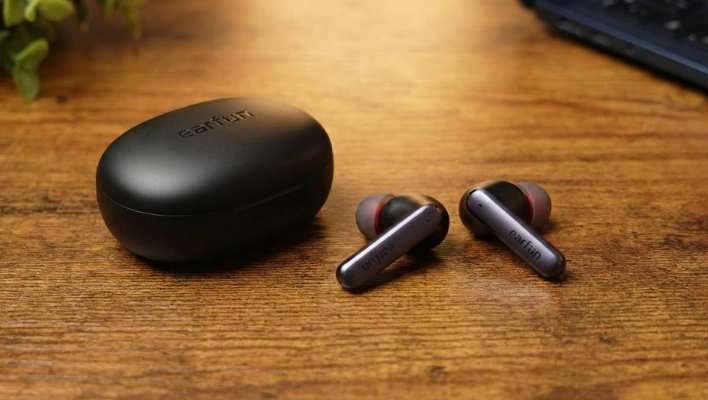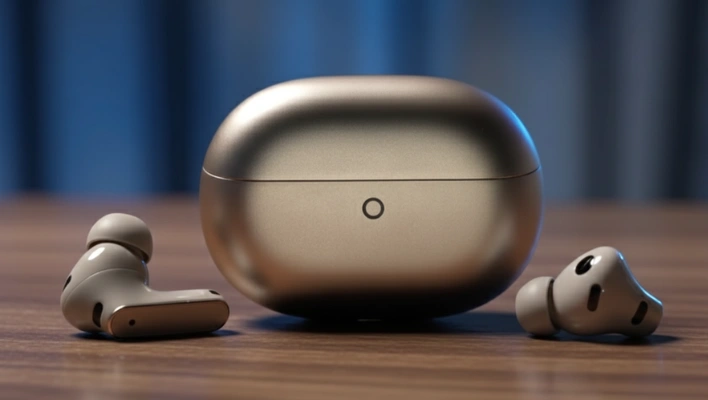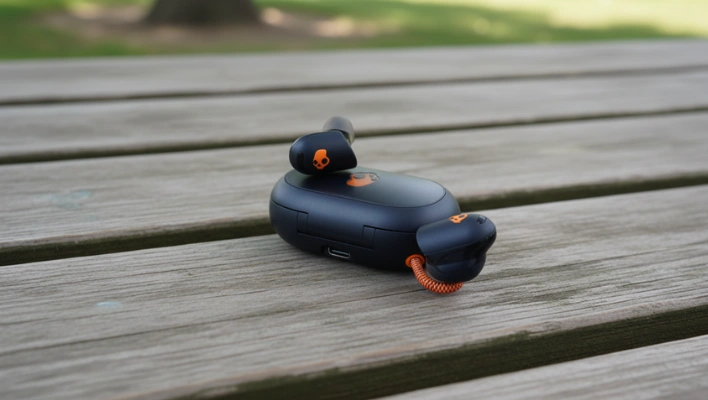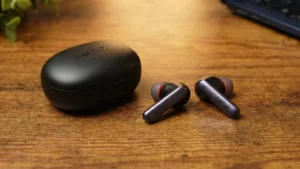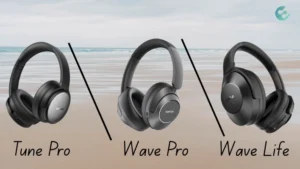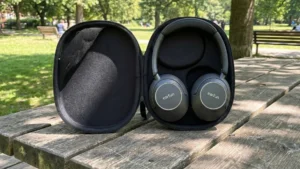In the digital era, earbuds have become almost as essential as smartphones, keeping us connected to music, podcasts, and calls on the go.
However, as their use becomes increasingly ubiquitous, concerns about their impact on health, particularly regarding vertigo, have surfaced.
This article delves into whether earbuds can cause vertigo, exploring the mechanisms behind this condition, the role earbuds may play, and how to mitigate any adverse effects.
What is Vertigo? Overview
Vertigo is a condition characterized by the sensation that you or your surroundings are spinning or moving, even when there is no actual movement. It can affect balance and cause dizziness, leading to discomfort and potential safety risks.
Definition: Vertigo is a specific type of dizziness perceived as a spinning sensation. It can be subjective (feeling like you are spinning) or objective (feeling like the surroundings are spinning).
Causes:
- Inner Ear Disorders: The most common cause, involving issues with the inner ear which is responsible for balance.
- Meniere’s Disease: Characterized by fluid buildup in the ear and hearing loss.
- BPPV (Benign Paroxysmal Positional Vertigo): Tiny calcium particles clump up in canals of the inner ear.
- Vestibular Neuronitis: Inflammation of the vestibular nerve.
- Head Injuries: Trauma to the head can lead to vertigo symptoms.
Symptoms:
- Spinning sensation
- Nausea or vomiting
- Balance issues
- Nystagmus (abnormal eye movements)
- Headache and sweating
Diagnosis and Treatment:
- Diagnosis: Through physical examination, hearing tests, and imaging tests like MRI or CT scans.
- Treatment: Depending on the cause, treatment options include vestibular rehabilitation, medication, lifestyle changes, and in some cases, surgery.

Exploring the Connection Between Using Earbuds and Experiencing Vertigo
- Pressure Changes: Earbuds insert directly into the ear canal, and when used at high volumes, they can create significant pressure changes. This pressure can affect the inner ear’s delicate structures, potentially leading to vertigo symptoms for sensitive individuals.
- Direct Stimulation: The intense, direct sound from earbuds can stimulate the hair cells within the cochlea in the inner ear. Overstimulation or damage to these cells from prolonged high-volume sound exposure can disrupt the ear’s natural balance mechanism, contributing to vertigo episodes.
- Ear Infections: Regular and prolonged use of earbuds, especially if not cleaned properly, can lead to ear infections. These infections can spread to the inner ear, affecting the vestibular system responsible for balance and causing vertigo.
- Noise-Induced Hearing Loss: Continuous exposure to loud noise through earbuds can lead to noise-induced hearing loss, a condition that can also be associated with vertigo. The loss of hearing can alter the way the brain processes sound and balance information, potentially leading to vertigo.
- Sensitivity Variations: Individuals vary in their sensitivity to pressure and sound changes in the ear canal. Those with pre-existing conditions such as Meniere’s disease, vestibular migraines, or benign paroxysmal positional vertigo (BPPV) may find that using earbuds exacerbates their vertigo symptoms.
Can Earbuds Cause Vertigo?
The question of whether earbuds can cause vertigo is intriguing. Given that vertigo is associated with the inner ear, anything affecting this area has the potential to trigger symptoms. Here’s how earbuds might be implicated:
- Volume and Pressure: High volumes can cause significant pressure changes in the ear canal, potentially damaging the delicate structures within the inner ear. Prolonged exposure to loud sounds through earbuds can lead to hearing loss and might disturb the balance system, leading to vertigo.
- Ear Infections: Regular and extended use of earbuds, especially if they are not cleaned properly, can lead to ear infections. Infections can spread to the inner ear, affecting the vestibular system and causing vertigo.
- Direct Impact on the Inner Ear: The use of earbuds might not directly cause vertigo in everyone, but for individuals with pre-existing conditions like Meniere’s disease, BPPV (Benign Paroxysmal Positional Vertigo), or vestibular neuritis, using earbuds, especially at high volumes, could exacerbate their symptoms.
Strategies to Minimize the Risk of Vertigo from Earbud Use
To prevent earbud-related vertigo, it’s essential to understand how the use of earbuds can impact your inner ear and balance system. Here are several strategies compiled from various sources to help minimize the risk of vertigo when using earbuds:
- Limit Listening Time: Extended use of earbuds at high volumes can cause pressure in the ear canal, leading to vertigo. It’s advised to not use earbuds for more than 1-2 hours at a time to avoid triggering vertigo symptoms.
- Maintain Moderate Volume Levels: Listening to music or podcasts at a high volume can damage the inner ear. Keep the volume at or below 60% of its maximum to prevent vertigo and hearing loss.
- Clean Your Earbuds Regularly: Dirt and bacteria on earbuds can lead to ear infections, which may exacerbate vertigo symptoms. Ensure your earbuds are clean before use.
- Avoid Sharing Earbuds: Sharing can lead to the spread of infections. If you must share, clean the earbuds thoroughly before and after use.
- Use Noise Reduction Settings Wisely: Some earbuds come with active noise-cancellation (ANC) features that can help you listen at lower volumes by reducing background noise. However, be mindful of how these settings are used, as ANC can sometimes create a sense of pressure in the ear canal, potentially leading to discomfort or vertigo symptoms in sensitive individuals.
- Opt for Custom Fit Earbuds: If possible, consider using earbuds that can be custom-fitted to your ears. Custom-fit earbuds can provide a more comfortable and stable fit, reducing the risk of pressure-related issues and potential vertigo triggers. They can also enhance the listening experience by providing better sound quality at lower volumes.
- Take Regular Breaks: Giving your ears a rest from constant sound exposure allows the delicate tissues inside your ear to recover, reducing the risk of vertigo.
- Choose Over-the-Ear Headphones: Over-the-ear models are less likely to cause pressure changes in the ear canal compared to in-ear earbuds, making them a safer choice for those susceptible to vertigo.
- Seek Professional Advice: If you experience vertigo symptoms that don’t improve with these measures, consult a healthcare professional for personalized advice and treatment.
- Special Exercises: For those already experiencing vertigo, exercises like the Brandt-Daroff, Epley Maneuver, and Semont Maneuver can help manage symptoms. These exercises involve specific head and body movements to alleviate vertigo but should be practiced under professional guidance.
Also See: How to stop Airpods falling out of your ears
Final Words
While modern technology brings convenience and connectivity, it’s essential to use it wisely to protect our health.
Earbuds, when used improperly, have the potential to contribute to vertigo symptoms, especially in susceptible individuals.
By understanding the risks and taking steps to mitigate them, we can enjoy our favorite sounds without compromising our well-being.
Frequently Asked Questions
Can Earbuds Cause Vertigo?
Yes, earbuds can potentially cause vertigo for some people. This is because they insert directly into the ear canal, creating pressure changes that can affect the inner ear’s delicate balance system. Not everyone will experience vertigo from earbud use, but those with sensitive ears may be more susceptible.
How Can I Prevent Vertigo When Using Earbuds?
Yes, earbuds can potentially cause vertigo for some people. This is because they insert directly into the ear canal, creating pressure changes that can affect the inner ear’s delicate balance system. Not everyone will experience vertigo from earbud use, but those with sensitive ears may be more susceptible.
How Can I Prevent Vertigo When Using Earbuds?
To prevent vertigo while using earbuds, keep the volume down, take regular breaks, and avoid using them for prolonged periods. Cleaning your earbuds regularly can also help prevent ear infections that could lead to vertigo.
What Should I Do If I Experience Vertigo from Earbuds?
If you experience vertigo while using earbuds, reduce the volume or turn it off, remove the earbuds, and sit down in a calm, stable position. If vertigo persists, consulting a healthcare professional is advisable.
Are There Specific Maneuvers to Alleviate Earbud-Induced Vertigo?
Yes, maneuvers like the Epley or Semont maneuver can help alleviate vertigo. These exercises involve specific head and body movements to reposition inner ear particles and improve vertigo symptoms. Always consult with a doctor before trying these maneuvers.
Can High Volume from Earbuds Cause Hearing Damage?
Absolutely. Listening to earbuds at high volumes can cause damage to the inner ear, leading to hearing loss. It’s recommended to keep the volume at 60% or below and limit listening time to protect your hearing.
Are Noise-Cancelling Earbuds Safe for People with Vertigo?
Noise-cancelling earbuds can be safe, but if you’re sensitive to pressure changes or prone to motion sickness, they might exacerbate vertigo symptoms. It may be beneficial to opt for non-noise-cancelling models or over-the-ear headphones instead.
Nick, the Co-founder of Earbuds Arena, is a seasoned freelance tech journalist with over ten years of experience covering wearables, apps, headphones, and gadgets. When he’s not immersed in the tech world, you’ll likely find him unwinding with video games, going for a run, or enjoying a game of soccer on the field.

